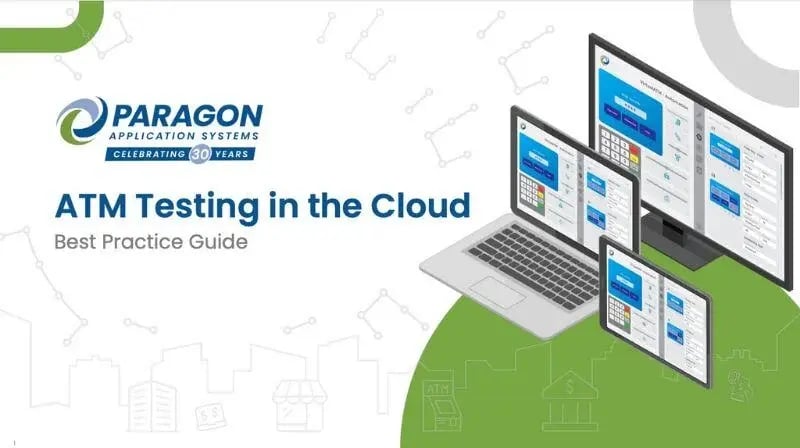Payments
Why End-to-End Payment Testing Has Become a Core Business Requirement
Why End-to-End Payment Testing Has Become a Core Business Requirement

October 9, 2025
Payment systems today are more complex than ever—they form a complex, interconnected web of banks, processors, card schemes, merchants, and consumers.
Every electronic transaction today touches dozens of integrated systems that must perform flawlessly and securely on every interaction. This complexity, along with the speed of innovation, regulatory scrutiny, and continued growth of digital payments, has exposed serious gaps in how many organizations test their systems.
End-to-end (E-2-E) payment testing has evolved from a recommended best practice into a business-critical discipline. This broad approach to testing ensures that every part of the payment lifecycle—from initiation to settlement—operates as intended across platforms, devices, and networks. When paired with automation, end-to-end testing helps organizations validate the full transaction life cycle, uncover failures throughout the payment flow, reduce costs, and build a robust and resilient payment processing operation.
“The more connected your systems, the more important your testing. You’re not just validating your app—you’re validating the financial trust chain.”
— Tim Sloane, VP of Payments Innovation, Mercator Advisory Group
The Value of End-to-End Testing
Payment system failures are no longer considered defensible technical hiccups or minor consumer inconveniences—they have become headline-making events that impact millions of users. From failed authorizations to delayed settlements or duplicate transactions, the risks are real:
- Customer churn from poor checkout experiences
- SLA violations and financial penalties
- Compliance failures with card schemes and regulators
- Security gaps exploited by fraudsters
With modern payment testing tools like Paragon's Web FASTest, organizations can execute high-fidelity simulations across their entire payment chain—from POS terminals to backend clearing systems.
What End-to-End Testing Covers
Effective end-to-end payment testing validates multiple layers of the transaction journey:
- Message validation: Ensures formats like ISO 8583 and ISO 20022 are structured and processed correctly.
- Routing logic:Verifies that messages are delivered to the right switch, network, or bank.
- Authorization & settlement: Simulates real-time approval logic and delayed batch settlement.
- Edge case simulation:Tests unusual scenarios like offline reversals, timeouts, or duplicated messages.
- Fraud workflows: Verifies whether your transaction monitoring rules catch suspicious activity.
Paragon’s automated payment testing tools make this level of precision repeatable and scalable.
Where Traditional Testing Falls Short
Many QA teams still test in silos. Frontend UI testers, backend database QA, and fraud systems all run independently, if at all. This fragmentation leads to blind spots:
- An approved transaction fails to settle
- Fraud detection doesn’t trigger for malformed messages
- Tokenized cards break issuer routing
Only automated end-to-end testing catches these interactions. Platforms like Web FASTest allow testers to simulate real-world volumes and conditions with virtual endpoints for acquirers, issuers, and gateways.
The Benefits of End-to-End Testing
Adopting end-to-end payment testing delivers tangible advantages:
- Improved reliability: Fewer bugs escape to production
- Reduced downtime:Stress testing under peak loads identifies bottlenecks early
- Better fraud protection: Negative testing for spoofing and duplicates validates rule logic
- Enhanced audit readiness:Maintain compliance with PCI DSS, ISO standards, and DORA requirements
- DevOps compatibility:Tests can be triggered automatically in CI/CD pipelines
According to McKinsey’s Global Payments Report, payment complexity and real-time demands are driving financial institutions to rethink operational resilience and automation at every layer.
Why Automation Matters
End-to-end testing is only scalable with automation. Manual testing across integrations, networks, and devices simply doesn’t cut it. With automated tools, teams can:
- Validate changes across every system on each code commit
- Re-run regression suites overnight without resource drain
- Compare builds, identify latency spikes, and track fraud rule behavior
The benefits of automated payment testing include:
- Speed: Validate entire transaction flows in minutes, not days
- Coverage:Test scenarios that are cost-prohibitive to test manually
- Accuracy: Avoid human error in complex test cases
Paragon’s ATM Testing tools and VirtualATM expand this to include physical channel testing, such as card insert, receipt printing, and PIN pad edge cases.
The Time is Now for E-2-E Testing
In 2025 and beyond, no top-tier payment processor can afford blind spots in its transaction flow. Whether it’s a fintech rolling out P2P apps or a global processor handling EMV and ISO 20022 transactions, comprehensive testing isn’t a luxury—it’s an operational necessity.
As the Capgemini World Payments Report highlights, the intersection of new technologies and customer expectations is forcing institutions to re-architect their payment ecosystems—starting with testing.
End-to-end testing isn’t just about technical due diligence—it’s about risk mitigation and business protection.
Rethink the Way You Test ATMs
Paragon’s testing solutions provide the infrastructure to test everything from contactless payment initiation to batch settlement files, fraud rules to chargeback workflows. We help organizations shift from reactive QA to proactive validation, with test coverage that spans the entire payment lifecycle.
Want to see what end-to-end testing could look like for your team? Schedule a demo with Paragon and explore our Payment Testing Resource Center.
Included In This Story
Paragon Application Systems
Paragon ATM simulation tools provide the features, functions and flexible automation options so that you can run more tests in less time - improving quality, shortening delivery cycles, reducing costs, fostering collaboration, and increasing channel profitability.











